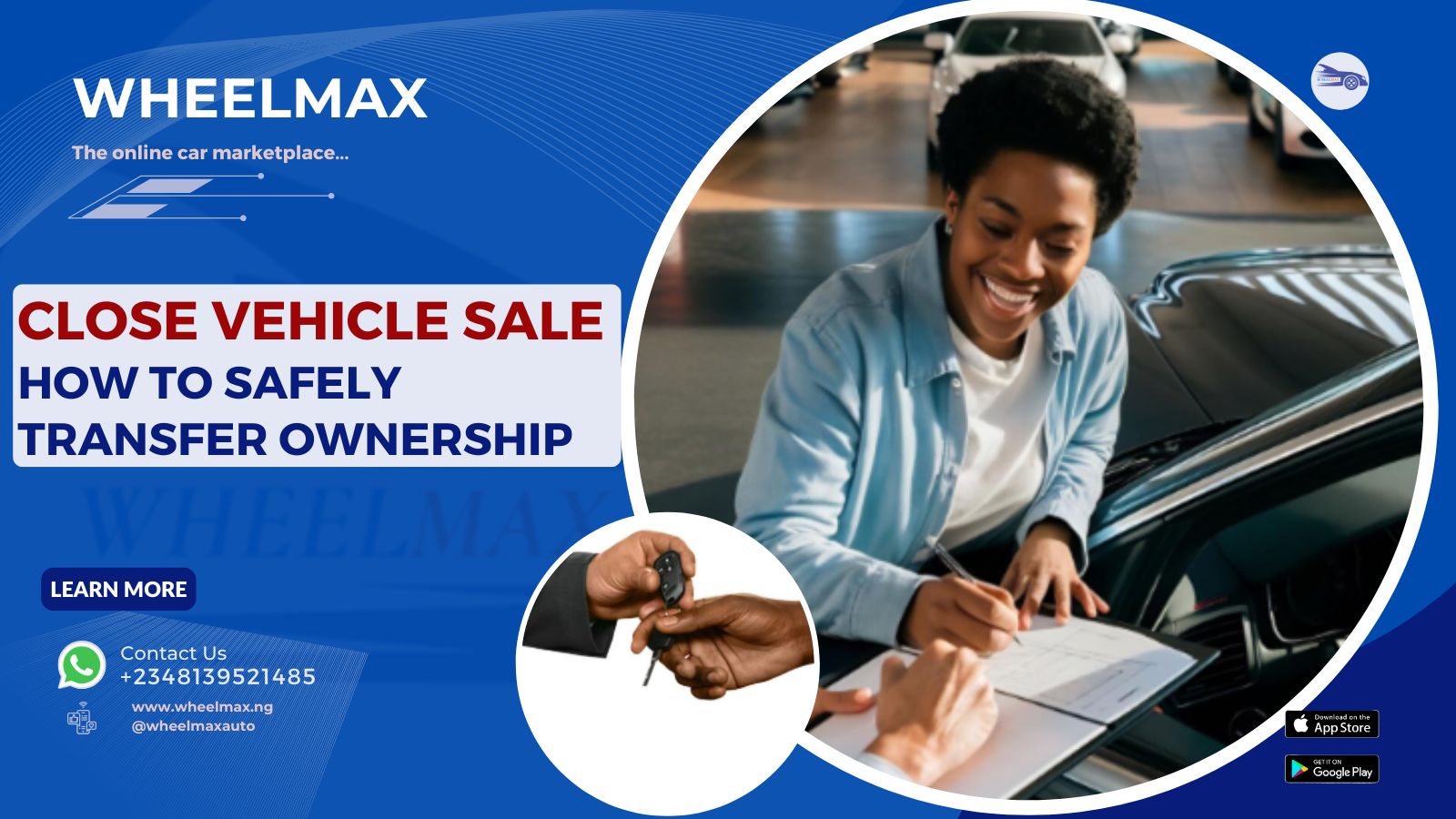How To Securely Transfer Ownership After The Sale of a Car in Nigeria
The handshake is firm, the price is agreed upon, and the thrill of a successful car sale is in the air. But before you celebrate, there's one final, crucial step that separates a smooth transaction from a potential nightmare: the transfer of ownership. A secure and legally sound transfer isn't just about paperwork; it's about protecting both the buyer and the seller from future complications, ensuring peace of mind, and solidifying a great deal.
At WheelMax, we're committed to enhancing your transaction efficiency and safety. This guide will walk you through the essential steps to securely and legally transfer vehicle ownership in Nigeria, ensuring a seamless experience for all parties involved.
The Foundation of a Secure Transfer: Documentation
Proper documentation is the bedrock of a secure vehicle ownership transfer. Having all the necessary paperwork in order builds trust and prevents unnecessary delays.
For the Seller, your essential documents include:
- Original Proof of Ownership: This is the primary document proving you are the legal owner.
- Original Vehicle License/Registration: Shows the car is registered for road use.
- Valid Means of Identification: A government-issued ID such as a Driver's License, National ID Card, or International Passport.
- Proof of Customs Duty Payment: This is critical for imported vehicles to avoid issues with customs authorities.
- Duly Signed Vehicle Transfer Form (Form MVA 5): This form officially notifies the authorities of the change of ownership.
For the Buyer, you will need:
- Valid Means of Identification: Similar to the seller, a government-issued ID is required.
- A Passport Photograph.
- Proof of Address: A recent utility bill or bank statement.
Sealing the Deal: The Sales Agreement
While a verbal agreement is a start, a written and signed sales agreement or "Bill of Sale" is your legal safety net. This document should be clear, concise, and leave no room for ambiguity.
Your Sales Agreement should clearly state:
- Full Details of Both Parties: Names, addresses, and phone numbers of the buyer and seller.
- Complete Vehicle Details: Make, model, year, color, Vehicle Identification Number (VIN), and registration number.
- The Agreed Sale Price: Stated clearly in Naira (₦).
- Payment Terms: How and when the payment will be made. For private sales, a lump-sum payment is strongly advised.
- Date of Handover: The specific date the vehicle and keys are transferred.
- "As Is" Clause: This clause signifies that the buyer accepts the car in its current condition, protecting the seller from liability for defects discovered after the sale, provided no known major issues were fraudulently concealed.
- Signatures: Both the buyer and seller must sign and date the agreement. Having a witness is also a good practice.
Secure Payment: The Heart of the Transaction
The exchange of money is often the most vulnerable part of the transaction. It's crucial to use secure and verifiable payment methods.
- Bank Transfers: This is one of the safest methods as it creates a clear digital trail. Ensure the funds have been cleared in your account before releasing the vehicle.
- Bank Drafts/Cashier's Checks: These are generally more secure than personal checks, as the funds are guaranteed by the bank.
- Cash: While seemingly straightforward, carrying large amounts of cash can be risky. If you must use cash, arrange to meet at a bank where the money can be immediately verified and deposited.
Red Flags to Watch Out For:
- Overpayment: A common scam involves the buyer "accidentally" overpaying and asking for a refund before their fraudulent payment bounces.
- Pressure for Quick Payment: Scammers often create a false sense of urgency to rush you into making a decision without proper verification.
- Unusual Payment Methods: Be wary of requests to use cryptocurrencies or wire transfers to foreign accounts.
- Sudden price changes: Whenever you want to make a purchase and there is a sudden change in price, either increase or decrease, it's usually not for a good reason - Run first, ask questions later.
Making It Official: The Legal Transfer Process
With the documents in order and payment secured, it's time to legally transfer ownership. This process typically involves the following steps:
1. Visit the Relevant Authorities: This could be the Federal Road Safety Corps (FRSC) or the Motor Vehicle Administration Agency (MVAA) in your state.
2. Submit the Necessary Documents: Provide all the documents listed above, including the completed transfer form.
3. Vehicle Inspection: The licensing office may conduct a physical inspection of the vehicle to verify its condition and details.
4. Pay the Required Fees: The buyer is responsible for paying the prescribed transfer fees.
5. Obtain New Registration Documents: Once the process is complete, the new owner will be issued new registration documents, including a new vehicle license and proof of ownership certificate.
It is crucial for the seller to ensure that the ownership transfer is completed promptly. Until the transfer is official, the vehicle might still be legally linked to you, potentially causing issues if the new owner incurs fines or is involved in an incident.
For the Buyer: Final Checks for a Smooth Ride
Before driving off, the buyer should:
- Verify Vehicle Documents: Use online platforms like the National Vehicle Identification System (NVIS) to verify the authenticity of the car's papers.
- Update Insurance: Contact your insurance company to update the policy with the new vehicle details.
By following these steps, you can ensure a secure, efficient, and legally sound transfer of ownership, turning a potentially stressful process into a seamless and satisfying conclusion to your vehicle sale or purchase.
